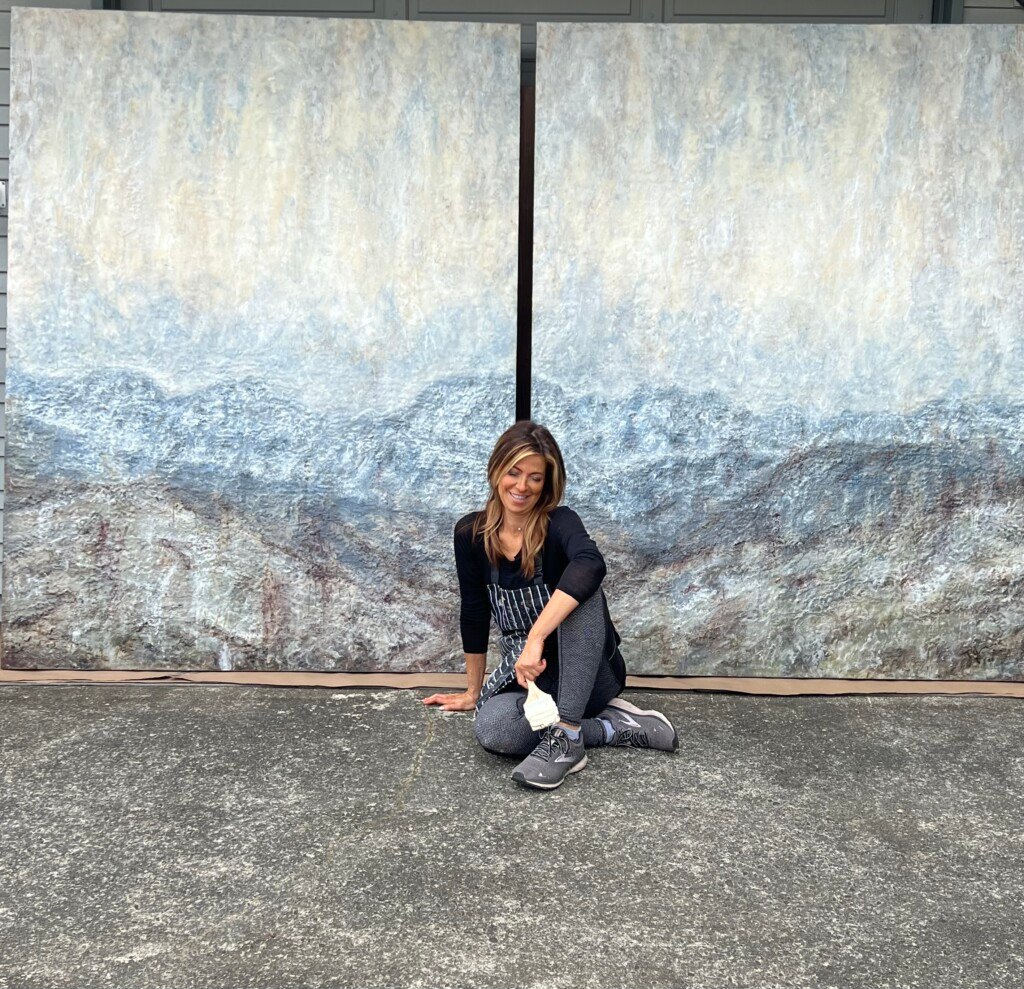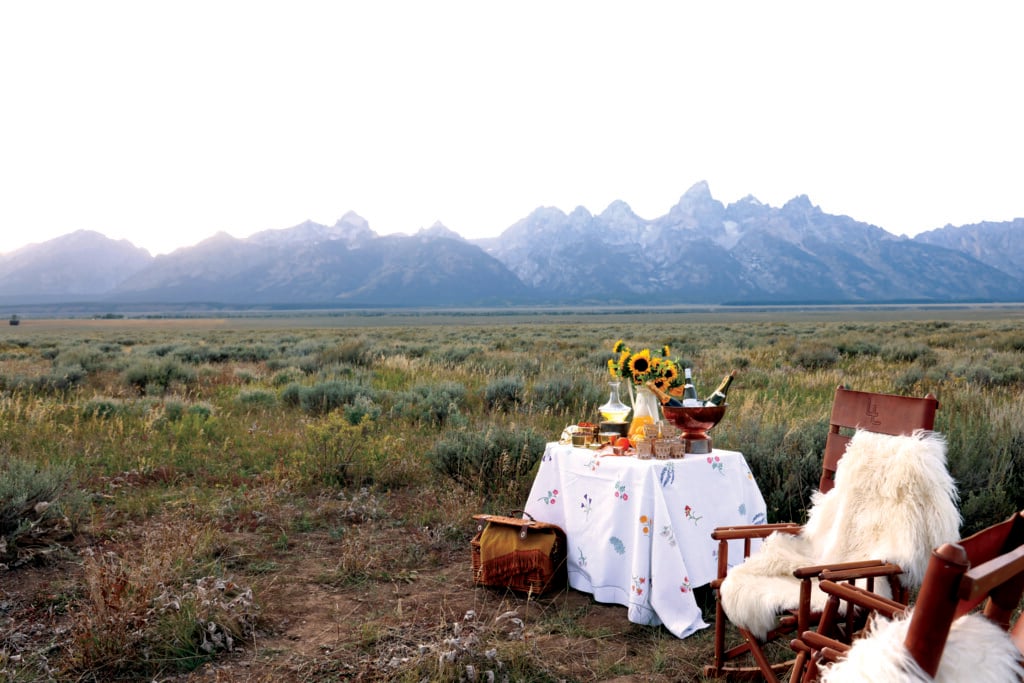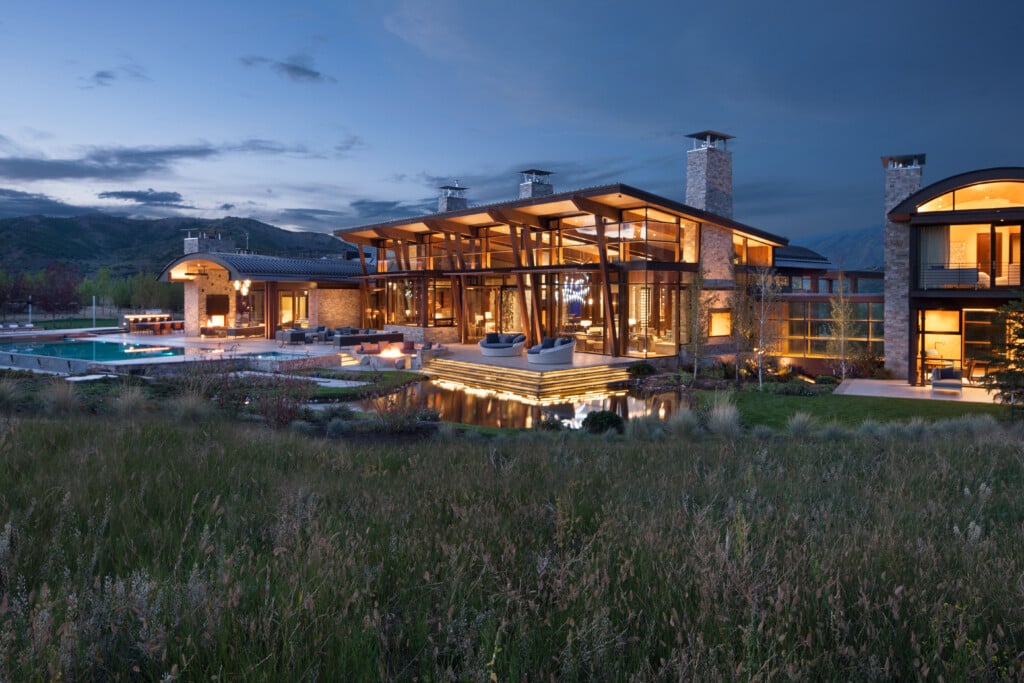Turning Tumbleweeds Into Treasures
From two-stepping cowboy bars to highly designed interiors of celebrity homes, tumbleweed chandeliers are having a moment

Each tumbleweed chandelier is unique in its shape and how it filters light, creating soft and intricate filigree patterns of illumination and shadow (chiaroscuro) on the ceiling, walls and all other surfaces. | Photo by Jen Isbell
Some people see tumbleweed as a romantic symbol of the Wild West—immortalized in 20th-century Western movies and in songs (perhaps most famously by cowboy actor Roy Rogers). Others see tumbleweed as an invasive species that disperses seeds (about 250,000 per plant) as it rolls and tumbles across the open range at the mercy of the wind. Fiber artist Jenn Isbell sees the dried bundles of dead foliage as raw material for her ethereal chandeliers. “When the light is on, the patterns of light and shadow—like lace, like Indian henna designs—are magical,” she says.
Isbell has been transforming tumbleweeds into lighting devices for more than 10 years. “When I first moved to California [from Chicago], I lived off the grid on a goat farm,” she says. It was in the high desert—hot, quiet, dry—and tumbleweed was everywhere. She made a few chandeliers and sold them locally. In 2015, she founded her company Sand+Suede and began selling her creations nationwide.

Jenn Isbell pictured with her car full of tumbleweeds. “I remember picking tumbleweed burrs out of the back-seat upholstery for weeks,” she says. | Photo by Jen Isbell
“My clients see this as a rustic alter- native to the antler chandelier,” Isbell says. Tumbleweed Dance Hall & Concert Venue in Stillwater, Oklahoma, placed a substantial order. So did Womenfolk, a high-end consignment shop in Jackson Hole, Wyoming. Soon, notable interior designers were calling, and tumbleweed chandeliers were hanging in top restau- rants, design-forward public spaces and celebrity homes. “Celebs can have any light they want, and I am pleased that they choose mine,” she says.

The kitchen of the Mal Paso residence overlooking the coastline in Big Sur, California, designed by Studio Schicketanz (led by architect Mary Ann Schicketanz), is a model of modern sustainability. | Photo by Joe Fletcher Photography
Asked where she harvests tumbleweed, Isbell replies: “A dry lakebed in Joshua Tree used to be my gold mine.” After a windstorm, she could find more than 100 in gigantic piles. Because tumbleweeds can create massive road hazards, they are quickly removed by the highway crews. As a result, they are becoming harder to find.

The interior of Isbell’s retail store, which she closed in 2022 to concentrate on special orders. | Photo by Jen Isbell
“I drive along frontage roads at 8 miles per hour, looking in culverts, ravines and highway underpasses,” she says. Tumbleweed is a prickly weed; you can’t just touch it with your bare hands. Isabell wears a long-sleeved shirt and gloves to keep from getting cut up—yet she still does. She chooses her specimens carefully, for size (from 21 inches to 68 inches), color (they come in everything from slate green to brown to bleached-out white) and shape (some are wide and round, others are shaped more like a ballerina’s tutu).

The loquat tree in Isbell’s backyard, where she trims and preps commissioned pieces. | Photo by Jen Isbell
Over the years, Isbell has developed a unique take on the tangled history of the tumbleweed. In the 1870s, immigrant Russian farmers arrived in South Dakota bringing flax seed that had been contaminated with Russian thistle. By the end of the 1800s, this interloper had rolled its way across most western states. “But many wild and domestic animals feed on the plant’s tender new shoots,” she says. Indeed, Russian thistle hay saved cattle from starving during the Dust Bowl of the 1930s.

“My Mad Max Tumbleweed Hauler that never gets stuck in the sand,” says Isbell. It is useful for transporting larger tumbleweeds. | Photo by Jen Isbell
In her studio, making the chandeliers is time-consuming work. “I have two or three for each project because the process of drilling a hole in the stem does not always go well,” she admits. Once it is finished and wired, the result is dazzling. “Each one is different … like snowflakes,” says Isbell, taking a moment to admire her handiwork.
As seen in ML’s September/October 2023 Issue








